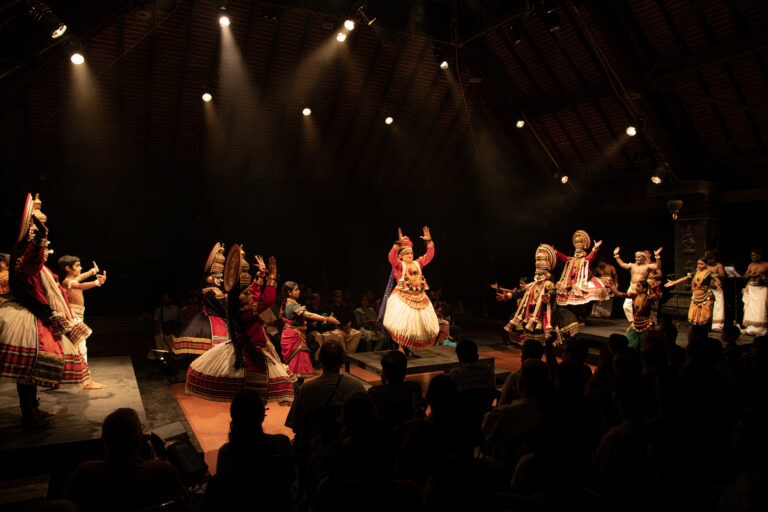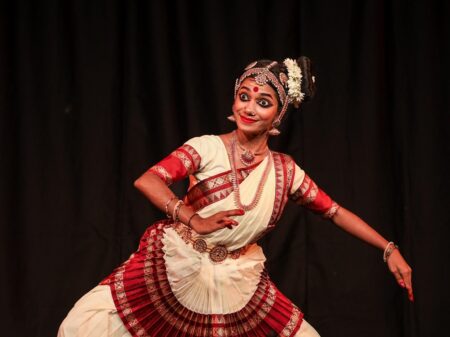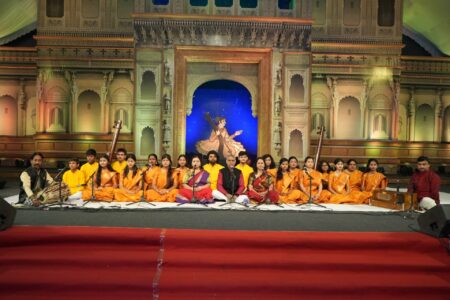“The Old Man and the Sea” was made into a Kathakali play, mixing old dance styles with new stage ideas and actors, including one from Italy.
Adapting Western classics into Kathakali is not uncommon. Many renowned literary works from around the world have been translated and performed in the Kathakali format over the years. The latest addition to this tradition is Ernest Hemingway’s The Old Man and the Sea, which was staged last week at Kerala Kalamandalam’s Koothambalam.
This one-and-a-half-hour-long production was directed and choreographed by Kalamandalam Neeraj, a young and dynamic Kathakali artiste working at Kalamandalam. The lyrics for the play were penned by theatre activists Mohandas Romanta and Aneesh Shankar.
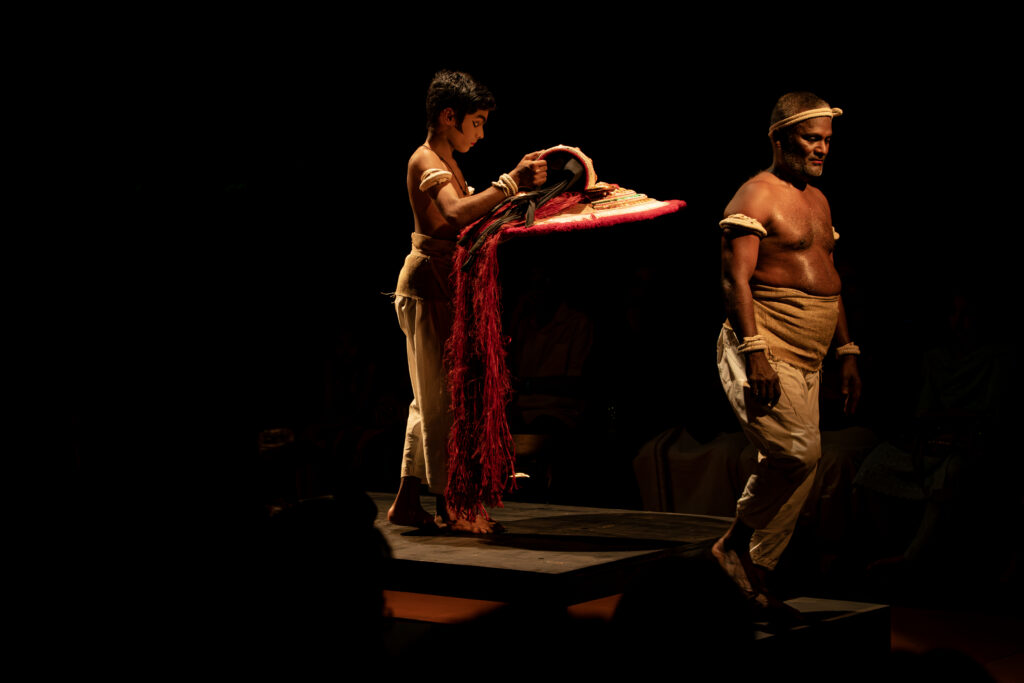
Hemingway’s The Old Man and the Sea (1952) is a novella that narrates the tale of Santiago, an aging fisherman, and his arduous struggle to catch a giant marlin. The Kathakali adaptation closely follows this theme, beginning with Santiago’s dream. Energised by his young companion, Nanolin, Santiago gets on his journey into the Gulf Stream. Initially, he catches only a small albacore, but soon a massive marlin is hooked to his line. A dramatic struggle ensues between Santiago and the marlin, culminating in Santiago tying the fish to his boat. However, a mako shark detects the scent of blood and attacks the marlin. More sea creatures soon follow, devouring the fish despite Santiago’s desperate attempts to fend them off. Finally, the weary fisherman returns to shore with only the skeleton of the marlin, lying down in anticipation of yet another dream.
Powerful performances
Transforming this literary classic into a Kathakali is really challenging to any artist or a director. Neeraj, an experienced artist with a background in modern theatre, took this challenge and won the hearts of audience over two days of performances. On the first day, Santiago was portrayed by Mario Barzaghi, an Italian artiste who trained in Kathakali in 1985 under Kalamandalam Padmanabhan Nair and Kalamandalam John. On the second day, the role was performed by Kalamandalam Pradeep, a seasoned Kathakali artiste.
Pradeep’s nuanced portrayal, especially through his body language, brought a unique depth to the character. His costume was designed to resemble a fisherman rather than a traditional Kathakali hero, relying solely on mudras and body movements for expression. His performance, particularly during the marlin hunt and in the aftermath of his loss, was deeply evocative. Remarkably, despite these experimental elements, he adhered to the fundamental structure of Kathakali.
A standout performance was delivered by Peesappalli Rajeevan, who portrayed the sea itself. A versatile artiste proficient in both Kathakali and theatre, Rajeevan took the audience into another world with his innovative depiction of the ocean. The costume and the make up for the character is similar like a female kathakali character, but the headgear was taken from Nangiarkoothu. This was a real challenge for the director and artiste. This unconventional visualisation of the sea was initially a challenge, but his masterful performance made it a compelling artistic experiment.
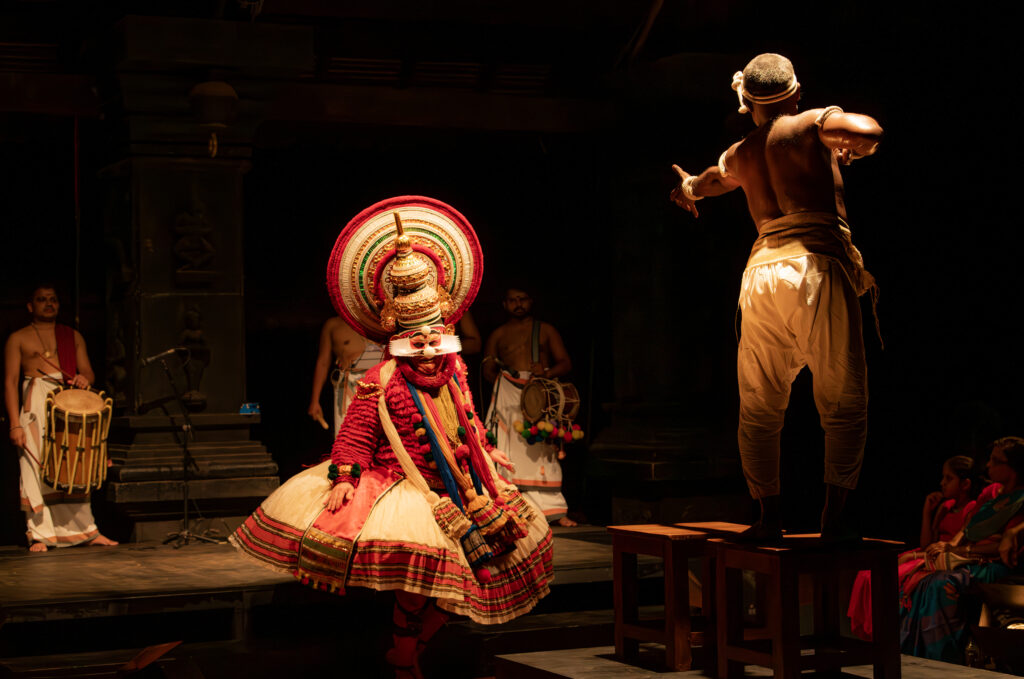
The role of the marlin was enacted by Kalamandalam Hari R. Nair, a senior Kathakali artiste. Clad in a red-beard (chuvanna thaadi) costume, Hari’s portrayal of the fish was energetic and visually striking. His transformation from a human into a mammoth looking fish and subtle acting during the last scene was outstanding has won the hearts of the audience.
Innovation in staging and musical composition
Apart from these lead performers, nearly ten other artistes from Kerala Kalamandalam took on various roles, enhancing the production’s grandeur. The success of this experimental Kathakali play was also significantly influenced by its music and percussion. Kalamandalam Vinod, a seasoned Kathakali singer, composed the music and set the ragas for the lyrics, maintaining the traditional essence of Kathakali music. His efforts, along with vocal support from Kalamandalam Viswas, enriched the emotional depth of the play. The percussion ensemble, featuring Kalamandalam Venu Mohan and Kalamandalam Ravishankar on the chenda and Kalamandalam Sreejith and Kalamandalam Vaisakh on the maddalam, added to the rhythmic intensity of the performance.
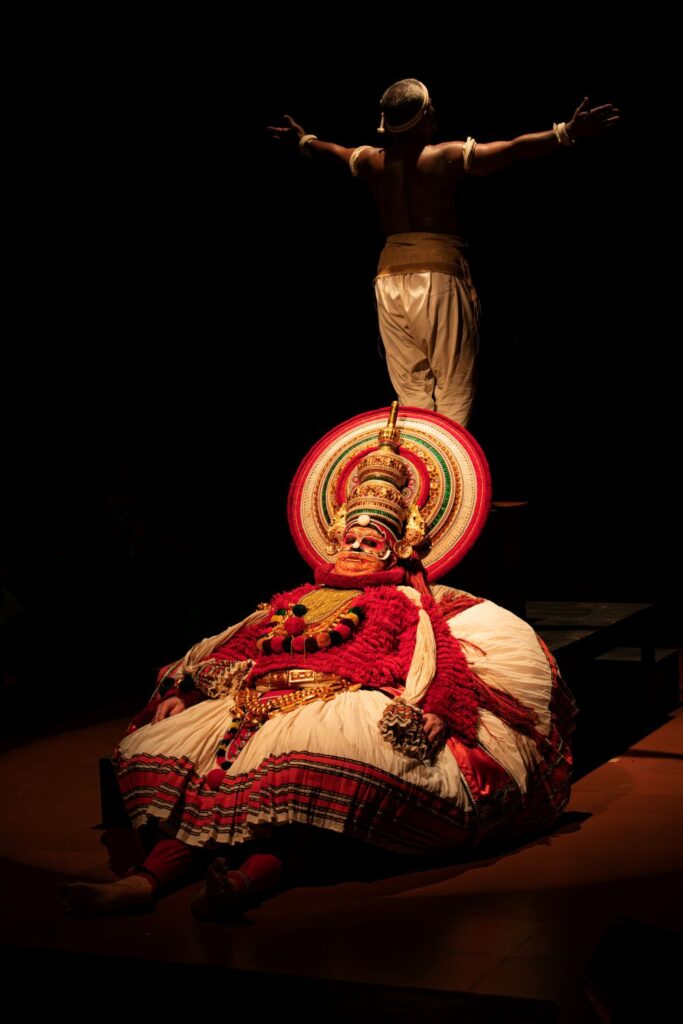
While the story itself is unfamiliar to traditional Kathakali audiences, the play’s staging retained the essence of the art form. The director introduced a novel stage arrangement, departing from the conventional Kathakali setup. The audience was seated on either side of the performance space, at times becoming an integral part of the theatrical frame. Three platforms were used—two for the musicians and percussionists, and a central one where most of the acting took place. Occasionally, the entire space was utilised for performance, making it a dynamic visual experience.
Neeraj does not expect this adaptation to be performed regularly at temple festivals or traditional Kathakali venues. Instead, he envisions it for larger theatrical stages. The meticulous preparation and rigorous rehearsals leading up to the premiere were evident in the seamless execution of the play. A production of Kerala Kalamandalam Deemed University for Art and Culture, this Kathakali adaptation of The Old Man and the Sea stands as a testament to the dedication, innovation, and collaborative effort of numerous artistes and technicians.

